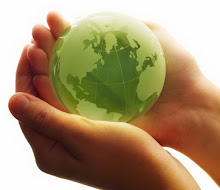.bmp)
Environmental chemistry., it isimportant to have some appreciation of environmental science as a whole.Environmental science in its broadest sense is the science of the complexinteractions that occur among the terrestrial, atmospheric, aquatic, living, andanthropological environments. biology, ecology, sociology, and government,
environmental science will be defined as the study of the earth, air, water, and living environments, and the effects of technology thereon. To a significant degree, environmental science has evolved Carry out their life cycles. A time has evolved into ecology, the study of environmental factors that affect organisms and how organisms interact with these factors and with each other. Affected irreversibly by technology. applied intelligently by those knowledgeable of environmental science, it can serve,rather than damage, this Earth upon which all living beings depend for their welfareand existence.
The Environment
Air, water, earth, life, and technology are strongly interconnected
Traditionally, environmental science has been divided among the study of the
atmosphere, the hydrosphere, the geosphere, and the biosphere. The atmosphere is
the thin layer of gases that cover Earth’s surface. of gases, the atmosphere moderates Earth’s temperature, absorbs energy and damaging
ultraviolet radiation from the sun, transports energy away from equatorial
regions, and serves as a pathway for vapor-phase movement of water in the hydrologic
cycle. The hydrosphere contains Earth’s water. Over 97% of Earth’s water is
only a relatively small percentage of the total water on Earth is actually involved
with terrestrial, atmospheric, and biological processes. Exclusive of seawater, the
water that circulates through environmental processes and cycles occurs in the
atmosphere, underground as groundwater, and as surface water in streams, rivers,
lakes, ponds, and reservoirs. The geosphere consists of the solid earth, including
soil, which supports most plant life. hydrosphere, and living things is the solid lithosphere. The lithosphere varies fromthe other spheres of the environment are concerned is its thin outer skin composedlargely of lighter silicate-based minerals and called the crust. All living entities on
Earth compose the biosphere. Living organisms and the aspects of the environment
pertaining directly to them are called biotic, and other portions of the environment
are abiotic.To a large extent, the strong interactions among living organisms and the various
spheres of the abiotic environment are best described by cycles of matter that
involve biological, chemical, and geological processes and phenomena. Such cycles
are called biogeochemical cycles,
environmental science will be defined as the study of the earth, air, water, and living environments, and the effects of technology thereon. To a significant degree, environmental science has evolved Carry out their life cycles. A time has evolved into ecology, the study of environmental factors that affect organisms and how organisms interact with these factors and with each other. Affected irreversibly by technology. applied intelligently by those knowledgeable of environmental science, it can serve,rather than damage, this Earth upon which all living beings depend for their welfareand existence.
The Environment
Air, water, earth, life, and technology are strongly interconnected
Traditionally, environmental science has been divided among the study of the
atmosphere, the hydrosphere, the geosphere, and the biosphere. The atmosphere is
the thin layer of gases that cover Earth’s surface. of gases, the atmosphere moderates Earth’s temperature, absorbs energy and damaging
ultraviolet radiation from the sun, transports energy away from equatorial
regions, and serves as a pathway for vapor-phase movement of water in the hydrologic
cycle. The hydrosphere contains Earth’s water. Over 97% of Earth’s water is
only a relatively small percentage of the total water on Earth is actually involved
with terrestrial, atmospheric, and biological processes. Exclusive of seawater, the
water that circulates through environmental processes and cycles occurs in the
atmosphere, underground as groundwater, and as surface water in streams, rivers,
lakes, ponds, and reservoirs. The geosphere consists of the solid earth, including
soil, which supports most plant life. hydrosphere, and living things is the solid lithosphere. The lithosphere varies fromthe other spheres of the environment are concerned is its thin outer skin composedlargely of lighter silicate-based minerals and called the crust. All living entities on
Earth compose the biosphere. Living organisms and the aspects of the environment
pertaining directly to them are called biotic, and other portions of the environment
are abiotic.To a large extent, the strong interactions among living organisms and the various
spheres of the abiotic environment are best described by cycles of matter that
involve biological, chemical, and geological processes and phenomena. Such cycles
are called biogeochemical cycles,





No comments:
Post a Comment